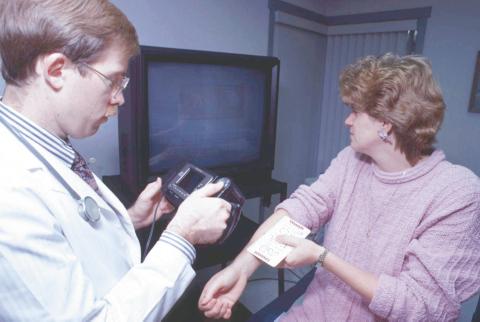Computer Helps Doctors Track Patients Better
A computerized medical care and record-keeping system developed to help space travelers is being groomed by UF researchers for more immediate applications on Earth.System 2000 --- 16 years in the making --- harbors the latest information from 12 medical reference books, some 1,000 medical journals and an atlas of human anatomy. The program features digital dictation and transcription, automated storage and retrieval of patients' records, information on more than 20,000 drugs and their side effects and video and sound bytes recorded during the physical examination for the patient's electronic medical chart.
The program is designed to help doctors better inform patients about their care, keep paperless medical records, prevent dangerous drug interactions and confirm diagnoses.
``An automated, interactive medical office system would let physicians make better use of their time during the brief doctor-patient encounter and actually help them build stronger relationships and trust with their patients,'' said Dr. Ralph Grams, developer of System 2000. He is a pathology professor and medical informatics specialist at UF's College of Medicine.
Family physician Glen Morgan, whose clinic in Ocala is a pilot test site for System 2000, said, ``I expect System 2000 to save me between $20,000 and $30,000 a year just in transcription and office staff costs.''
Morgan is teaming the system with a hand-held camera that can be connected to a computer during patient exams for displaying or recording photographs and video of skin conditions and other visible health problems. The camera stamps a date and time onto the digitally recorded images, which can be added automatically to the patient's electronic medical chart so healing can be tracked from visit to visit.
NASA has invested nearly $4 million in Grams' development of System 2000 since 1979. UF, which owns the copyright to the system, has signed an exclusive 25-year licensing agreement with Symed, Inc., to market System 2000 under the trade name Symed S2000.
Larry Lansford

photo by: Russ Lante
Dr. Glen Morgan of Ocala stores digital images of a mole on patient Wendy Dobson's arm in her electronic medical chart on the Symed S2000 system.